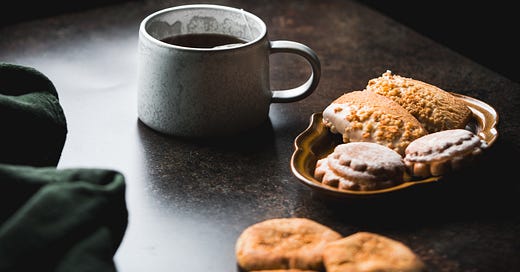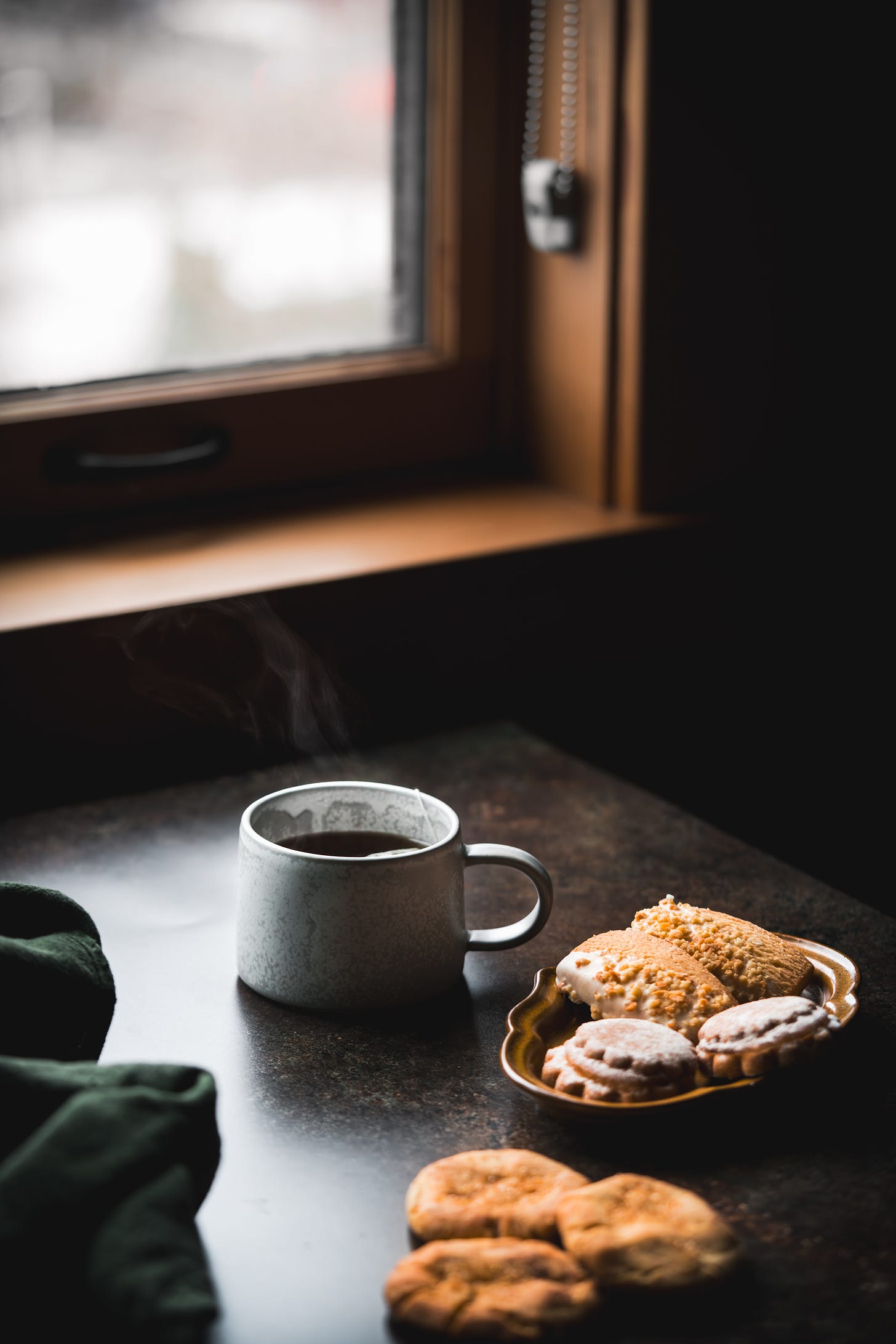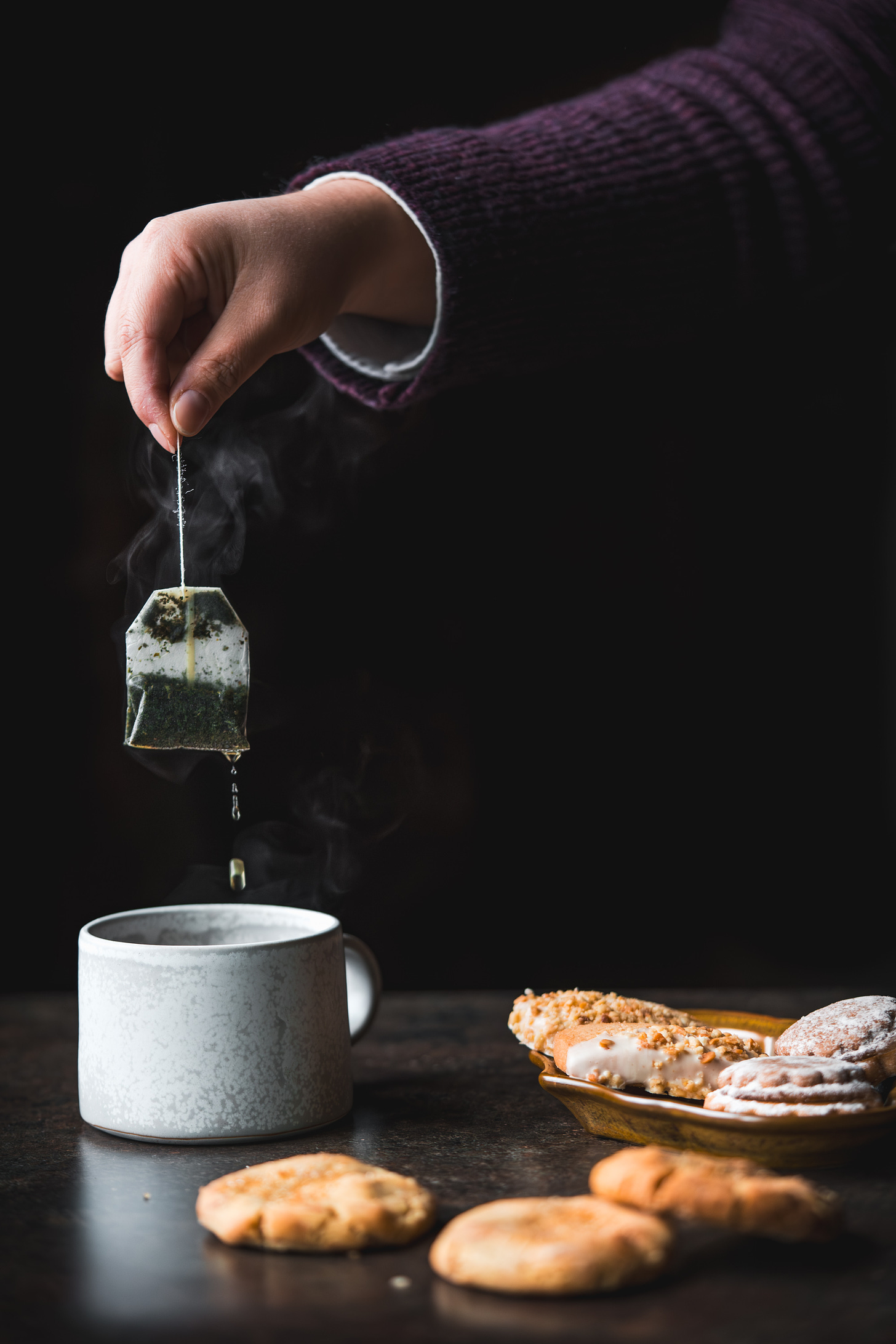The Monday Digest, February 2024
What happened last month on the newsletter, what’s to come and why I named it My Cup of Tea
I am creating this special newsletter (an extra one from the weekly you’ll receive on Thursdays) as a friendly and casual way to talk about what you can expect this month and to look back on what I shared the previous month, among other things without a very defined topic. You’ll receive The Monday Digest every first Monday of each moth.
The most relevant thing that happened on January was that I created this space, of course! I decided it almost on a whim mid-month so there were only three newsletters on January. Also, I had to figure out how often I wanted to send it out and what topics I’d write about. I would still (and always) love your feedback so if you have any input on what you’d like to see more of or what you didn’t like so much last month, please, send me a comment!
Here’s the plan I’ll follow every month from now on:
The Monday Digest: The first Monday of every month you’ll get a summary of what I sent out the previous month, a sneak peak of what you’ll get the current month and latest food news, personal notes, etc.
Every Thursday: a new newsletter on the following topics (a different one each week): 1 recipe, 1 in-depth essay about the history and uses of a dish or ingredient, 1 educational blog on food photography, 1 chronicle or travel guide.
January’s summary
On January I only had time to send out three newsletters:
This first one was an introduction to myself and to this project, so if you haven’t read it, go check it out to understand why I’m doing this now: A New Beginning.
This is the first historical essay of the series I’ll be working on this year. I will be researching the history and stories of the most beloved dishes of New England, USA. It’s where I happen to live but also I think it’s the base of some foundational recipes that the whole country has adopted, which make them very interesting. This first one is definitely one of them: New England Clam Chowder.
I finished up last week with a recipe I really like and that’s perfect for these cold days, also it’s vegan: Coconut Chickpea Curry.
What’s to come this February
Thursday the 8th: You’ll get a new recipe. It’s great for Valentine’s day or for any other day you want to treat yourself and your loved ones: Crepes with mascarpone and grapefruit syrup. I will also give some historical notes on the grapefruit and the other citruses. By now you must know this is my jam (pun intended)! Also, it’s one of my favourite food stories, because it’s so unexpected!
Thursday the 15th: I thought it would be fun to show you the Behind the Scenes of how I created the styled photos for the previous recipe. You’ll see my creative process and hopefully understand a bit better what’s behind a beautiful photo of a dish. I’ll talk about light, composition, colours, angles and editing!
Thursday the 22nd: Second dish of the New England series: Yankee Pot Roast. This is a staple of the winter in New England and it speaks a lot of the history of its people.
Thursday the 29th: You’ll want to save this one for future reference. I’ll be sharing with you some of my favourite places in the world to eat. Maybe I even inspire your next vacation!
I gave it a name, and it’s My Cup of Tea
People who know me think that when it comes to tea, I’m more English than my Luton born husband. It’s no doubt my preferred source of morning stimulant. I never really got into coffee. I remember being a teenager and going for lunch with my parents to a restaurant. I would be excited all throughout the meal until after the dessert (for which I always had a little space reserved in my belly), then I would get incredibly bored. My parents would spend ages drinking coffees and what in Spain we call “la sobremesa”. It basically means that you stay another good hour after you’ve eaten sitting down chit chatting with the sole company of a coffee, or two, and/or a liquor.
Probably it was also the adult conversation what I found boring, but the fact that they always had to have coffee after the meal made it too maddening for me. That was until I found my own substitution (and I started to have my own lunches and dinners).
I got into tea through infusions actually. In Spain they are not uncommon. We have them as digestives or sometimes if we are not feeling too well. My grandma Rosa built my taste for them during the summers I spent with her in the Catalan countryside. She would always get freshly dried herbs at the herbalist and make a delicious infusion after lunch. She would make her own mix and add lemon verbena, thyme and something else I cannot remember now, and finish it off with a drizzle of local honey. I can still vividly remember that taste now, many years after having a hot cup in my hands. It felt herbal, warm, sweet and comforting. And my grandma and I would sit in front of the tv, with the shutters half way down so the afternoon sun wouldn’t disturb us from what would definitely come later, and enjoy that cup of tea together.
That was not really tea, though. A friend of mine, Marta, told me about black tea some years later and I started experimenting with it at home. At first, I didn’t understand when were you supposed to add the milk, or if you were supposed to add both milk and water. To a Spanish person surrounded by coffee drinkers, it was not obvious. I had been making horrible cups of tea until I went to London with Marta on our first adult trip and I observed the fine art of pouring milk into the brewed tea cup. It was magic. It created a beautiful cream cloud I could have stared at forever. This was my convincing. It tasted good (in London, proper good) and it was beautiful.
But I was still doing it wrong, very wrong. Some years later, during my travels around South East Asia, I met Ross, who is now my husband. His view on tea was much more natural than mine. I was fascinated by it, but for him it was as normal as brushing your teeth in the morning. He was the one that corrected the latest (and some may same worst) of my tea making mistakes. He introduced me the kettle. I will say, before the hate comes, in Spain back then we had no kettles. Why would you? Nobody was making tea! My grandma would boil some water on the stove to make the infusions, but I was too lazy to wait for the water to boil, so yes, I would warm my water in the microwave. I know.
The main problem with this technique is that the water doesn’t really boil, and if it does, it’s difficult to know when. Therefore, you are not really brewing the tea, you are just warming it. At first I didn’t think it was a big deal. I thought it was Ross being too picky, but then I started taking it seriously too. With the kettle, the taste was much more intense and there was a certain pleasure in knowing you are doing good to the tea leaves, that you are respecting the process.
In China they also take tea very seriously and I joined a couple of tea serving ceremonies when I visited the country. There, the tea is served differently, and also it is different. They prefer green and white teas rather than black, and it’s of course, never served with milk. The temperature has to be right, the tea has to be served twice (the first one discarded), and there’s a rhythm to it that was hypnotising.
I have since then tried many different kinds of teas. I have been to tea plantations, and I have seen the process of drying the tea leaves and learned what makes a certain kind of tea. I have enjoyed teas in many different places, with many different traditions. And I have loved them all. From the delicious Masala Chai in India, to the Oolong tea in China, to the Thai tea in Thailand and the Teh Tarik in Malaysia, to the classic English Breakfast at home. And then the infusions, that I still highly enjoy.
I haven’t yet tried a tea I don’t like. Perhaps the first would be that tea with sea salt that some have been raging about. My routine starts undoubtedly with a cup of black tea with milk, though now the cow milk has transformed into oat or almond milk since discovering I am lactose intolerant. Then, the day continues perhaps with another one of those if I am feeling cheeky, or perhaps with a beautiful cup of Earl Grey mid afternoon, but normally I go on with infusions that don’t have any theine (similar to caffeine) such as camomile or mint tea. I also love to prepare my own masala chai at home (let me know if you’d be interested in the recipe!). And I have tons of tea from different parts of the world for when I want something different, or fancier.
Every time you read one of my newsletters you can picture me writing it with a cup of tea next to me, often warm, sometimes iced. I feel it creates a comforting environment and it also helps me stay focused, not so much because of its stimulating effect but because of the beautiful association I’ve created between tea and writing. And I normally write about food, which, more than anything else, is my cup of tea.
A great infusion for the cold times
Check this video out if you want some inspiration on one of my most loved infusions to this day. I made this little video on a very snowy day here in Boston (after living in Barcelona and Bangkok snow days are still really exciting!) and I thought it was the perfect time to share this super simple recipe.
I used to drink this all the time in Thailand. Even if it seems silly, in South East Asia one can get a cold very easily because it’s so hot outside that when you get in a shopping mall you get hit by stupidly low temperatures, and your body doesn’t really understand. I used to carry a jacket with me all the time for when I wanted to go to the cinema… Anyway, you just need fresh ginger, lemon and honey and you’ll make yourself an immune-boost infusion! In India they add turmeric to make it extra powerful. You can try it, but add only a pinch at it leaves an earthy taste.
Food News
In The United Stated there has been a craze about water filling cups, specially about a brand called Stanley. Amy McCarthy wrote about it on Eater,
also wrote this newsletter on the topic and now it seems that the cups may have lead, which has led to a lot of backfire. And little old me is still wondering who needs such huge sizes…- writes about different Food Justice terms on her newsletter today, a really good read to understand such important topics.
The farmers’ protests in Europe continue. To understand better, you can read this.
Personal Notes
I have been loving Behind the Crimes newsletter and podcast by
! I am a true crime fan and this one is really well made and researched.I went to the cinema again and I also loved the movie. Origin is based on the making of the book Caste: The Origins of Our Discontent and explains the journey the author Isabel Wilkerson takes on to discover the origins of the oppression black people suffer (still) in America and how this is linked to the cast system in India.
February is also the month dedicated to celebrate the achievements and history of African Americans here in the United States as part of Black History Month. I will be trying to join some of the events organised around Boston.







